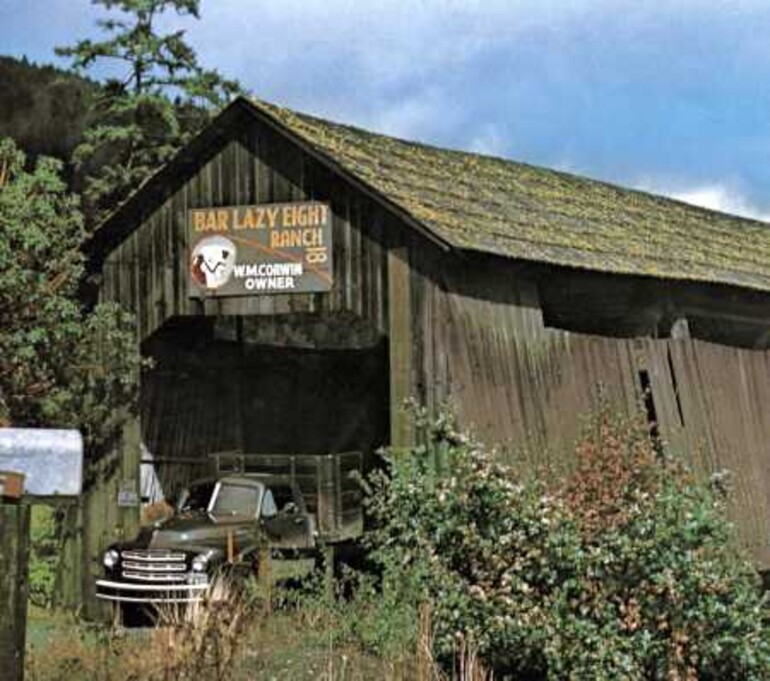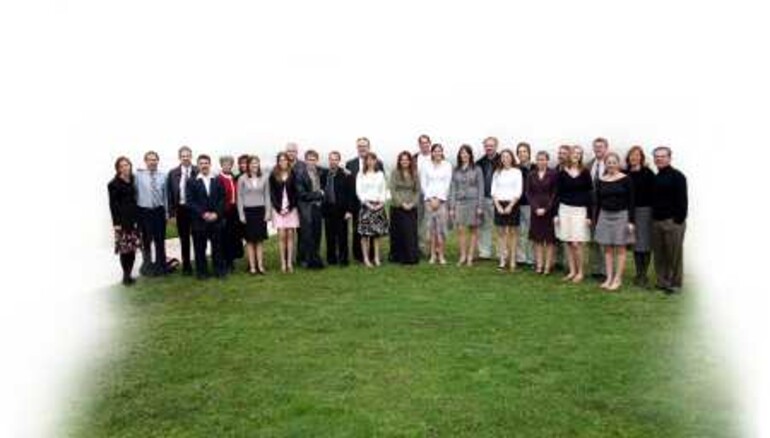The Potter’s Wheel Molding Lives at Milo As the clay is in the potter’s hand, so are you in My hand. Jeremiah 18:6 (AMP) As the potter’s wheel spins, the potter gently begins to mold the shapeless lump of clay into a masterpiece. While the wheel turns, the clay glides beneath the potter’s hands, smoothing into a recognizable form. With just a pinch here and a touch there, the potter adds character to the developing piece. The rough edges disappear, and, almost magically, the clay object grows tall and becomes more distinctive. As this piece of art begins to dry, the potter uses special tools to carve a design into the sides of the vase. Later, color is applied, and soon the masterpiece is completed. The vase is unique, beautiful, ready to serve its purpose, full of character and promise. Like the clay in the potter’s hands, children are shaped by the Master Potter. One of the Potter’s studios is the Christian school. There He can use caring pastors, teachers and a prayer-filled, mission-driven atmosphere to gently mold children's characters. Oregon youth have been especially blessed with several Christian education options. Day academies, home schools, and boarding academies have provided Christian secondary education. The Oregon Conference and North Pacific Union education departments have taken their mission seriously by hiring educators who have both the right credentials and a passion for letting God lead them in guiding young people. One of the Master Potter’s studios is Milo Adventist Academy (MAA). For the past 50 years, students at MAA have been given the opportunity to develop Christ-like characters in this resort-like setting. Why have students through the years chosen Milo? Alumni and current students point to the friendly spiritual atmosphere as the most outstanding reason, followed closely by MAA’s picturesque setting and high academic standards. Milo's family atmosphere creates a sense of community that nurtures emotional and spiritual growth among students. The potter shapes each raw piece of clay to reach its own highest beauty and function. So the Master Potter guides the Christian school staff to help each student achieve his or her individual best. At MAA that means providing advanced placement courses for the academically gifted, high quality classes for everyone, and individual tailoring of the educational experience for those who struggle with academics. MAA also offers a variety of hands-on technology courses. The academy began in the late 1940's when the Oregon Conference recognized the need for another academy to provide secondary education for Oregon Adventist youth. Of the sites they investigated, the one that best filled the high expectations of the leaders and the counsel of the Spirit of Prophecy was the Bar Lazy Eight Ranch (also known as the Corwin Ranch). Church leaders met in an old prune-drying shed on November 28, 1950, where they voted to purchase the ranch and its equipment. Soon after the Oregon Conference purchased the land, modern dairy buildings were erected, and in 1953, other major buildings were started. The 448 acres of fertile land and green forested hills along the mighty South Umpqua River would provide a beautiful setting, a place away from the city. Here students would have the opportunity to develop strong bodies, a healthy work ethic, and time-management skills while working and attending classes. In this place close to nature, students could grow spiritually, with a minimum of distractions. The miracles were many as dedicated workers built the school. More than half a million board feet of lumber was donated by various mills in the Roseburg and Medford areas. Lester Margart, one of the men who worked on the construction of the boys' dormitory, tells of one occasion when there was not enough lumber to finish the day’s work, and there was no money to buy more lumber. Joe Apigian left for town with a large trailer, saying he would be back with lumber for the crew. Not even knowing which direction to go, Joe prayed for guidance and soon arrived at one of the lumber mills. He went in to the office and said he had come for a load of lumber for Milo Academy. They were quick to tell him they did not have any order for him, and they were very busy. "The crew doesn’t have enough lumber to finish the day, and I was sent here for your help," he told them. After talking with them for a few minutes, he told them he would be willing to wait. That afternoon as the last piece of lumber at Milo was used, the crew could hear a horn honking all the way from the bridge. It was Joe Apigian with a full load of lumber donated by that mill. Milo Academy opened its doors in the fall of 1955. L.E. Russell, the first principal, along with 17 staff members, welcomed the 191 students who enrolled that first year. Milo was a school still under construction. The cafeteria’s cooking equipment didn’t arrive until a couple of days before school started, and when the stoves were hooked up, the staff were dismayed to discover that one of them didn’t work. The school's heating plant was not fully hooked up and working to capacity until at least a month after school started. And when the rains began … there was the mud to contend with. Milo’s icon, the historical covered bridge also known as the "Bridge to Your Future," makes a beautiful backdrop for swimming and baptisms. The original bridge was built in 1920. Its main stringer timbers were hand felled and hewn from trees up on the ridge behind the farm buildings and dragged down the hill to the river by a team of horses. In the early 1960s, Ed Stelzmiller, maintenance director, worked with students to replace the wooden bridge with a steel frame that would withstand the yearly floods and allow large trucks to access the campus. Despite the hardships that first year and the growing pains that followed, staff and student morale remained high. Today MAA alumni are scattered throughout the world, each a one-of-a-kind masterpiece. And the Master Potter is still at work on campus, molding, guiding, shaping unique and beautiful works of art.
The Potter’s Wheel
Molding Lives at Milo
As the clay is in the potter’s hand, so are you in My hand. Jeremiah 18:6 (AMP)
As the potter’s wheel spins, the potter gently begins to mold the shapeless lump of clay into a masterpiece. While the wheel turns, the clay glides beneath the potter’s hands, smoothing into a recognizable form. With just a pinch here and a touch there, the potter adds character to the developing piece. The rough edges disappear, and, almost magically, the clay object grows tall and becomes more distinctive. As this piece of art begins to dry, the potter uses special tools to carve a design into the sides of the vase. Later, color is applied, and soon the masterpiece is completed. The vase is unique, beautiful, ready to serve its purpose, full of character and promise.
Like the clay in the potter’s hands, children are shaped by the Master Potter. One of the Potter’s studios is the Christian school. There He can use caring pastors, teachers and a prayer-filled, mission-driven atmosphere to gently mold children's characters.
Oregon youth have been especially blessed with several Christian education options. Day academies, home schools, and boarding academies have provided Christian secondary education. The Oregon Conference and North Pacific Union education departments have taken their mission seriously by hiring educators who have both the right credentials and a passion for letting God lead them in guiding young people.
One of the Master Potter’s studios is Milo Adventist Academy (MAA). For the past 50 years, students at MAA have been given the opportunity to develop Christ-like characters in this resort-like setting.
Why have students through the years chosen Milo? Alumni and current students point to the friendly spiritual atmosphere as the most outstanding reason, followed closely by MAA’s picturesque setting and high academic standards. Milo's family atmosphere creates a sense of community that nurtures emotional and spiritual growth among students.
The potter shapes each raw piece of clay to reach its own highest beauty and function. So the Master Potter guides the Christian school staff to help each student achieve his or her individual best. At MAA that means providing advanced placement courses for the academically gifted, high quality classes for everyone, and individual tailoring of the educational experience for those who struggle with academics. MAA also offers a variety of hands-on technology courses.
The academy began in the late 1940's when the Oregon Conference recognized the need for another academy to provide secondary education for Oregon Adventist youth. Of the sites they investigated, the one that best filled the high expectations of the leaders and the counsel of the Spirit of Prophecy was the Bar Lazy Eight Ranch (also known as the Corwin Ranch).
Church leaders met in an old prune-drying shed on November 28, 1950, where they voted to purchase the ranch and its equipment. Soon after the Oregon Conference purchased the land, modern dairy buildings were erected, and in 1953, other major buildings were started.
The 448 acres of fertile land and green forested hills along the mighty South Umpqua River would provide a beautiful setting, a place away from the city. Here students would have the opportunity to develop strong bodies, a healthy work ethic, and time-management skills while working and attending classes. In this place close to nature, students could grow spiritually, with a minimum of distractions.
The miracles were many as dedicated workers built the school. More than half a million board feet of lumber was donated by various mills in the Roseburg and Medford areas. Lester Margart, one of the men who worked on the construction of the boys' dormitory, tells of one occasion when there was not enough lumber to finish the day’s work, and there was no money to buy more lumber.
Joe Apigian left for town with a large trailer, saying he would be back with lumber for the crew. Not even knowing which direction to go, Joe prayed for guidance and soon arrived at one of the lumber mills. He went in to the office and said he had come for a load of lumber for Milo Academy. They were quick to tell him they did not have any order for him, and they were very busy. "The crew doesn’t have enough lumber to finish the day, and I was sent here for your help," he told them.
After talking with them for a few minutes, he told them he would be willing to wait. That afternoon as the last piece of lumber at Milo was used, the crew could hear a horn honking all the way from the bridge. It was Joe Apigian with a full load of lumber donated by that mill.
Milo Academy opened its doors in the fall of 1955. L.E. Russell, the first principal, along with 17 staff members, welcomed the 191 students who enrolled that first year. Milo was a school still under construction. The cafeteria’s cooking equipment didn’t arrive until a couple of days before school started, and when the stoves were hooked up, the staff were dismayed to discover that one of them didn’t work. The school's heating plant was not fully hooked up and working to capacity until at least a month after school started. And when the rains began … there was the mud to contend with.
Milo’s icon, the historical covered bridge also known as the "Bridge to Your Future," makes a beautiful backdrop for swimming and baptisms. The original bridge was built in 1920. Its main stringer timbers were hand felled and hewn from trees up on the ridge behind the farm buildings and dragged down the hill to the river by a team of horses. In the early 1960s, Ed Stelzmiller, maintenance director, worked with students to replace the wooden bridge with a steel frame that would withstand the yearly floods and allow large trucks to access the campus.
Despite the hardships that first year and the growing pains that followed, staff and student morale remained high. Today MAA alumni are scattered throughout the world, each a one-of-a-kind masterpiece. And the Master Potter is still at work on campus, molding, guiding, shaping unique and beautiful works of art.











